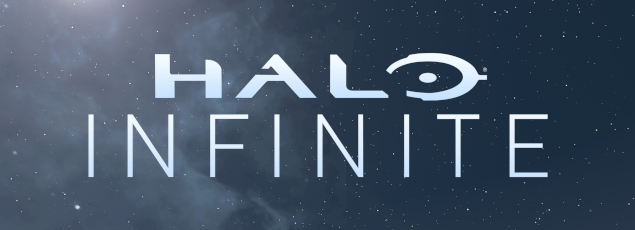
When we left Halo Infinite in the cold twilight of January, the game was in cryo sleep. As a boxed product, it had yet to be fully assembled, its slow load times and ugly glitches giving it the feeling of a beta rather than a final build. As a live service game, it left UNSC recruits pounding at a low progression ceiling and parched of new cosmetics and play experiences. When Infinite launched without core features, 343 Industries needed to make up a lot of ground in very little time, but instead, left a ten-month gap between major content updates and axed the Online Campaign Co-op feature. Between then and now, we've seen Infinite reawaken with not one but two new seasons of items and mechanics. Yet, just as the FPS seemed to be leaving its sleep pod, bittersweet news emerged that both gives us some confirmation of what's gone wrong at its developer and calls into question its capacity to get back on its feet. Here is Halo Infinite, nineteen months in.
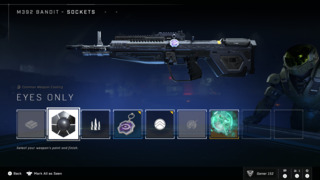
What I most love about 343's philosophy towards seasons is that they recognise that if the play is largely rooted in the weapons and equipment, a substantial expansion of the play must add and update guns and combat accessories. It's a conclusion few other live service shooters have reached. With Season 3, 343's armoury churned out the Bandit, a semi-automatic medium-damage rifle. Upon its reveal, players immediately associated it with the DMR, the trusty single-fire long-range armament from Halo: Reach. But I think the Bandit would baulk at the comparison; the lack of a scope on this bad boy means that it's not built for precision over long distances like the DMR or Battle Rifle. Instead, it challenges the player to keep a steady aim in the mid-range while encroaching slightly on the other couple of ranges around it. Like the Sidekick, its accuracy varies wildly based on the support of the user's hand, but it trades the Sidekick's lightness for weightiness and its rapid speed for a measured rate of fire.
The most transformative makeover of an existing weapon has been to the Disruptor. The community's reevaluation of this shock pistol has been fascinating to watch. We thought it was a wet squib for a long time after launch. When you only have two weapon slots and need to act fast in a firefight, why carry a sidearm with a lower damage per second than a conventional pistol? It didn't help that sometimes the Disruptor's damage-over-time function would glitch out and fail to trigger.
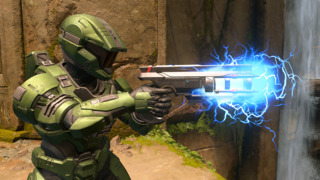
But 343 expanded its magazine, and the playerbase began to understand the nuanced advantages of its secondary effects. It could slowly damage combatants even when we didn't have line of sight, it would delay their shield recharge, it could disable vehicles, and it could chain its effects to multiple enemies. It took some time to feel out all those features, but they were there. Then 343 decided that a gun doing five things at once was suffering from mission creep and stripped it of its poison-like damage-over-time power.[1] They readjusted some of its other metrics to compensate, but the loss of the extended damage function brings an end to one of the coolest ideas in the Infinite weapon set.
In grenade news, the Spike Grenade has mutated so that it has a smaller spread but does more damage to players directly in front of it, while the Dynamo Grenade's electric bolts have been made more ferocious but arc within a smaller circle.[1] When designing grenades for a game, there's always the risk that you just make the Frag over and over, and create cheap get-outs for players who want high damage for poor aim. These updates to Infinite's explosives demand increased accuracy from the player and push you to better consider directionality and enemy attack formations when picking your grenade. I especially like the Spike Grenade talking a similar role to the trip wires in Bioshock.
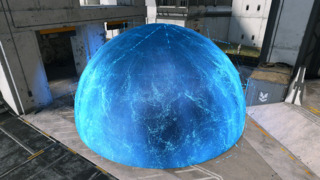
To the equipment shed, Season 3 brought the Shroud Screen, which pitches an opaque bubble wherever you drop it. Even your radar can't see in or out of the mysterious Shroud Screen. Like the original Infinite equipment, it finds applicability to a wide range of scenarios, and its helpfulness is proportional to the inventiveness with which you use it. You can lure an opponent into the bubble and then pull out a melee weapon to one-hit them, you can expand it at a junction to make a pursuer wonder which way you went, or you can block a sniper's view. On the attacking side, it's fun to fight stealth and cunning with brute force and fire a rocket into the shroud or run a Warthog through it, invalidating its advantages. If you fancy something craftier, try throwing a Threat Sensor in there.
In Season 4, we didn't get a new weapon, but we did get two more gadgets for our tool belt: the Quantum Translocator and the Threat Seeker. I think naming the Threat Seeker so similarly to the Threat Sensor is bound to confuse casual players, but mechanically, it rules. Like the Threat Sensor, the Seeker highlights enemies for your entire team to see, which is particularly useful in ranked play, where you must leave your radar at the door. Unlike the Threat Sensor, it doesn't mark everyone who wanders into a static sphere; it ricochets around the walls of a room before exploding with a cherry bomb pop, lightning up anyone unfortunate enough to get stuck in its path. Where the Threat Sensor was persistent and could give players a difficult choice between going the long way around or getting a target on their back, the Threat Seeker burns bright and short but can potentially mark more players without them having a say in it.
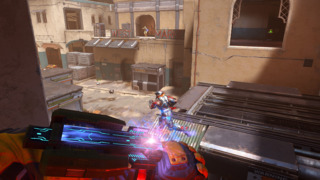
The Quantum Translocator is likeable enough, but I'm not as wild about it as the other two new items. This wristband drops a portal in the location you first use it. Then, when you next activate it, the portal moves to your current location, and you blip back to your previous portal. However, the Translocator expires over time; it's use it or lose it. If that's hard to follow, just think of it as a teleporter where you have to place the exit node manually. As with many of the most exciting implements in Infinite, you can see 343 thinking about what they can change in their designs beyond the payload of the tool: for the first time, you're not just affecting your vicinity with tech, you can set it up to affect anywhere on the map. On paper, that allows thought-provoking creativity: you can zap back to a refuge when your shield drops, phase behind an enemy to get stealth kill them, or return to base in a flash in case someone steals your flag.
The problem is it takes time to find a favourable point for your exit teleporter and then seek out an enemy. Placing down a portal near a probable combat zone is often not helpful because you'll transport only meters from where you started and because someone could get the drop on you during the portal's lengthy setup animation. After you've set your coordinates, it's also not a good idea to rush around looking for an opponent because that kind of recklessness gets you killed. Yet, if you don't find a use for the Translocator fast, it melts in your hands. You could use it as a ripcord for a losing battle, but wisely, the designers made it take just long enough to activate that you can't make it a panic button for whenever you have no shield and are being fired on. So, when I do get to teleport with the Translocator, I feel like a wizard, but I usually collect it and end up on a frantic hunt for a use for it, only to have it anti-climactically fizzle out.
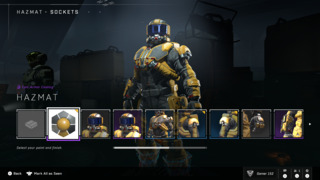
If you are phasing in behind flag carriers and back-smacking them, you'll want to look good doing it. While Halo seasons have always had ostensible themes, it's been hard to chart those aesthetic lines through the armour, maps, and modes they've delivered. Season 3 (Echoes Within)'s cosmetics are as much a booster pack for your existing power suits as anything uniquely flavoured. It's for the best: the last two seasons haven't shipped enough generic items for players to customise their rigs to their liking. But Season 4 (Infection) bears a recognisable style in its equipables: a first for a Halo Battle Pass. You've got this hazmat Mjolnir that, as a sucker for industrial vibes, I love, and it complements the returning Infection gametype.
Season 3 also reintroduced a gametype from previous Halos: Escalation Slayer. The premise of Escalation is that each team starts with basic weapons and earns new loadouts as they accumulate kills. The old Escalation was memorable but had its pants on backwards, the mounting firepower of one team leading to the kind of power feedback loops I've talked about on this blog before. In Infinite, however, you climb down a weapon curve, and that curve is based on ease of use rather than raw potential for damage. Level 1 lets you spray and pray with an Assault Rifle, but the final round sees you trying to club opponents to death with the unwieldy Oddball. It prevents runaway wins and leads to closer matches without disregarding player performance.
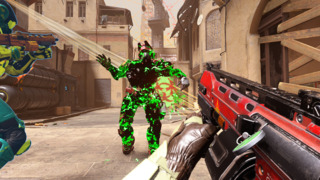
Like Escalation, Season 4's Infection is also a revamp and not just a rehash. While I loved the novelty of Infection when I first laid eyes on it, I think it falls down in letting one freak death kick you over to the zombie team. The mode has also required less open maps with fewer options, so Spartans don't get swarmed from all sides by Energy Swords. Matches always came down to a bunch of stragglers with their backs against a wall, hammering away on the trigger instead of any more dynamic use of space. Infinite doesn't entirely prevent that, but its mechanics do let you slip into the skin of the survivors and undead more convincingly. The infected carry equipment that lets them evade and stalk pursuers. They better realise the stealth aesthetics that 343 was going for in the shallow Covert One Flag or the forgotten Tactical Ops. But the infected are also as fragile as rotting flesh. It's not smooth sailing for the Spartans either, who are hamstrung by limited ammunition. With undead swarming and rounds in short supply, the living need to make every shot count. More ammo spawns around the map coax Spartans out into the open, so they're not always shutting themselves in one room for the whole match.
The Season 4 map, Forest, doesn't have the most inspired name but is well-outfitted for Infection. Spartans tend to mass on the ramparts along one side of the arena while twisting jungle paths and loose stones offer cover for the approaching infected. The exotic ruins of Forest are something you might expect to find on Delta Halo or even in Tomb Raider. Other highlights from Seasons 3 and 4 include the surprisingly vivid desert of Oasis, a cheeky platforming section in Chasm that leads up to a power item overhanging the whole colosseum, and the imposing, lava-lit facilities of Scarr. However, I'm no fan of the idea Chasm employs, where you have to climb long staircases to reach platforms just feet above you. Visually, my favourite of the new maps may be Solitude, a remake of Halo 5's criminally underrated Plaza. With its cold stone urbanity, it's the most beautifully bleak stage Halo multiplayer's ever gotten.
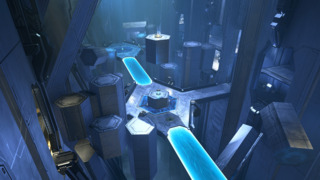
You might recall that the Season 2 maps were created in Forge, much to the consternation of the game's community. Look, I love Forge, and it's now in a state where maps load in properly, and we can make incredibly ambitious modifications with it, like adding water volumes. It's also easier than ever to find professional-grade community creations in matchmaking. Say what you want about the golden days of Halo; Bungie wasn't as sharp at showcasing fan work as this. But I have to admit, not building maps in Forge for Seasons 3 and 4 has made them look a damn sight better, especially when it comes to the outdoor battlegrounds. An unfortunate exception to this rule is Cliffhanger which succeeds in painting a picture of a remote and dignified secret compound but undercuts that immersion with flapping birds glued to the ground. And even if this is a cross-platform game, I know graphics on the Xbox One can get a lot more realistic than this.
It's these areas where the wires are poking out that make Infinite feel conspicuously unfinished, no matter how many modes and maps it might boast now. Even during Season 3, when a lot of Infinite's old cracks were getting filled in, the game's technical stability was not improving. In fact, in some areas, it degraded. Parts of the UI frequently wouldn't load. Music cues would fail to trigger, leaving the game with inappropriate tracks playing or in awkward silence. Nearly every match, dead bodies would get stuck in the geometry or rotate comically in the air. Playlist wait times were always incorrect.
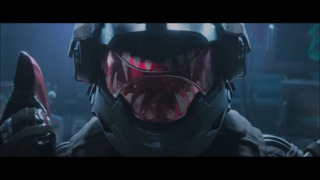
For the entire season, the first thing you saw every time you booted up the game was unadulterated jank. It would play the two opening cutscenes for the season, even if you'd watched them before, and then ask if you wanted to buy the Battle Pass whether or not you'd already purchased it. The game was replaying these scenes on each boot because it was dumping most of your settings every session, so it couldn't remember that you'd viewed those cinematics. After you mashed through the opening screens, there'd be a lengthy delay to connect to the multiplayer servers, and minutes could drag by as you searched for a game. That's if you were ever going to find one.
Season 4 did away with the cutscene glitch, but partly because the studio has given up trying to produce these cinematics, reducing the already threadbare consistency of the story in the multiplayer. So far, Season 4 has exhibited the spring bugs slightly less often, but they're all still there. Mistakes other services can patch within days, 343 can't get around to after nineteen months. Lord knows, it's not moving any faster, which is down to some combination of the wheels falling off the software and most of the player base having left for greener pastures a while ago. Modern audiences are sensitive as cilia to you wasting their time, but Infinite has always been an unnecessary timesink. It's not doing itself any favours by making the start of seasons, when the interest in the game is the highest, its least stable periods of operation. For those glitches that have been patched, I have no confidence they'll stay that way because, in the past, old bugs have been fumigated only to be reintroduced further down the line.
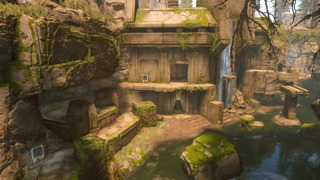
I still don't feel optimistic about Halo Infinite's future. When it comes to introducing new rewards and toys, 343 has hit a real stride. Those long-running complaints about sparse wardrobes and the absence of Forge are a thing of the past. We also have a persistent rank system now to keep progression rolling even for players who've completed the Battle Passes. Content-wise, Halo is back, baby! But for the average player, it's too little too late. Player figures are not significantly rising; they've almostcertainly fallen since January. I keep saying it, but because there are only a dedicated few left playing, the difficulty of the multiplayer is not appropriate for a general audience, balancing between teams can be absurdly lopsided, and all squads seem to come with a rookie who falls miles behind everyone else, which isn't enjoyable for anyone. In January, 343 understood that a waning player base was better concentrated into a few playlists. Now they're splitting up that tribe with all sorts of new hoppers, and I don't know why.
Live service games are developed on a long enough time scale that they often don't reflect the current state of their developer until months in the future. 343 may have just successfully shipped Season 4, but less than a fortnight after I published my last Halo field report, crucial personnel started leaving the studio. In January, Microsoft laid off almost 100 employees at 343 Industries, including top directors and contractors.[2]
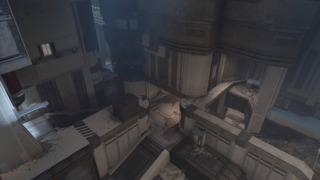
Around the same time as these layoffs, Head of Creative, Joseph Staten, and Lead Designer, Christopher Blohm, departed from the company. Their exits come on the back of other crucial personnel quitting the developer in late 2022: Studio Head, Bonnie Ross; Creative Multiplayer Director, Tom French; Head of Engineering, David Berger. One of these employees resigning would be a blow. All of them quitting within a four-month period makes me worry that no one is flying the plane. And this exodus does not suggest that skilled developers think they can get quality work done at 343.
The ever-reliable Jason Schreier reports that having struggled to introduce seasonal updates to Halo Infinite, 343 is now going to try to keep up their current pace while also porting the whole experience to the Unreal Engine. Schreier describes the work on the game as "all but starting from scratch", and the developer thinks they're going to do it without many of their veteran staff.[2] I know you can't jump to conclusions when we're missing a lot of information about internal events. Still, take stories like these, couple them with the current state of Infinite, and it doesn't exactly inspire hope.
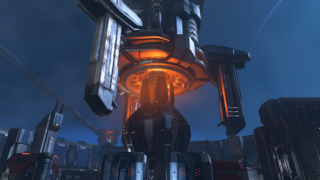
The only comfort I have comes in the hint of an explanation for what started so many fires at the company. Former Senior Multiplayer Designer on the game, Patrick Wren, and another ex-343 developer, Tyler Owens, describe their coworkers as brilliant but Infinite being compromised by Microsoft's management and business practices, including their reliance on contractors.[3] Schreier previously reported something similar, saying that the publisher's contracting policies throttled development of the game.[4]
Contract work is a known quantity in software engineering. Across many industries, big companies like contractors because they get what is effectively an employee, but one that they don't have to furnish with benefits. Because the end of the contract means many contractors are effectively months away from termination at any time, the employer also has more leverage over them and can shake workers' confidence. It's easier to push back on employees' attempts to secure workers' rights or fairer pay. As satellite parties, contractors also don't get promoted up the chain, taking management positions and higher salaries, and Owens claims that there are tax incentives for businesses that use contract labour.[3]
You might ask, if contractors are so exploitable, why don't companies just keep re-upping the same contracts indefinitely to get a kind of downgraded employee? Well, for one thing, if the workforce keeps turning over, people aren't getting enough time to form camaraderie with their coworkers and establish power within the company. So, they're in less of a social position to defend each other in the workplace, unionise, or form long-lasting industry connections.
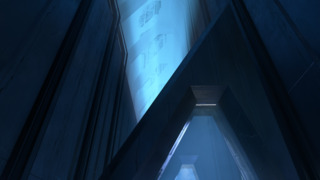
For another thing, Microsoft did try making their temp workers effective long-term employees without the same benefits. This earned them a class action lawsuit in 1992, resulting in the corporation having to pay out $97 million. It was a landmark event in convincing companies that maybe "permatemp" workers weren't such a good idea. Now, Microsoft only contracts employees for 18 months at a time before letting them go. It may rehire previous contractors, but only after a six-month gap.[4] It's pretty shitty to leave people in a position of economic precarity, estranged from their colleagues and the games they love working on. But it also tends to obstruct software development for a few reasons:
- It means that in the middle of making a game, you're potentially switching out all these people who know the project for a bunch of different workers who have to familiarise themselves with it anew.
- You're frequently severing working relationships between developers who then have to adapt to partnerships with new coworkers. Working together effectively is the lifeblood of any collective project.
- You're not giving developers time to acquire expertise and then apply it to your product. You're letting them build up those skills and then sending them right out the door. It's the brain drain that has long hampered the games industry but accelerated.
You can see how for a game like Halo Infinite, which is in a perpetual state of development and has been since 2015, a reliance on workers you lay off every 18 months might completely fuck things up. You don't have to spend long trawling social media to find disaffected players demanding Microsoft revoke 343's stewardship over the series. Although, you won't find it at the official Halo site anymore as they've now shut down forums and purged all threads. A big win for community preservation. Maybe there is some problem with the culture or workflow at the company, but the community is likely barking up the wrong tree. The contracts are clearly a big factor, if not the factor in the ruination of Halo Infinite, so making a different studio work on it under the same policies isn't going to remedy the issue. The Halo Infinite calamity looks like the familiar story of a parent company screwing over the people who could actually make them money, laying a bunch of them off, and then letting them bear the brunt of customer backlash while they laugh their way to the bank.
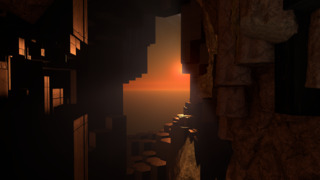
I value diversity in the articles I write, I get bored saying the same things, and I noticed that a lot of what I published on this blog was describing the failures of capitalism, particularly the dysfunctional stage of that system we find ourselves currently living through. I've made a concerted effort to spice up these articles up by trying to return to a wider range of subjects. And sometimes you just want a little escapism, to get away from the economic and political pressures of the world and stab some hydras or shoot some Spartans. But capitalism infects everything; anywhere there is profit to be made, there's someone hollowing out something genuinely cool to make a few pennies more. The greed is inescapable, and I keep seeing my favourite media going down the tubes because some parent company decided to strip mine its assets or some executives had a bright idea about contract policy. And so, inevitably, we keep returning to the topic of the disease of big business, whether we want to or not. I guess enjoy Halo while you can, and if you can't, at least the explanation of why it's such a hotbed of disappointments provides some conclusion. Thanks for reading.
Notes
- HALO INFINITE UPDATE – MAY 10, 2023 by 343 Industries (May 11, 2023), Halo Support.
- Microsoft Studio Behind Halo Faces a Reboot on Years of Turmoil by Jason Schreier (January 31, 2023), Bloomberg.
- Ex-Halo Infinite developers criticise "incompetent leadership" at Microsoft by Ed Nightingale (January 19, 2023), Eurogamer.
- A tweet by Jason Schreier (August 27, 2020), Twitter.
All other sources linked at relevant points in article.
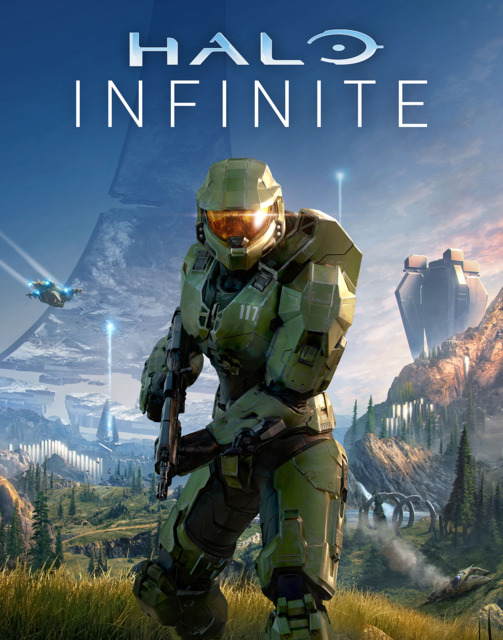
Log in to comment